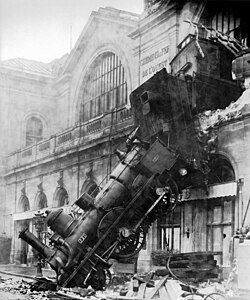
A buffer stop, bumper, bumping post, bumper block or stopblock (US), is a device to prevent railway vehicles from going past the end of a physical section of track.
Contents
The design of the buffer stop is dependent, in part, on the kind of couplings that the railway uses, since the coupling gear is the first part of the vehicle that the buffer stop touches. The term "buffer stop" is of Italian origin, since railways in Italy principally use buffer-and-screw couplings between vehicles.





